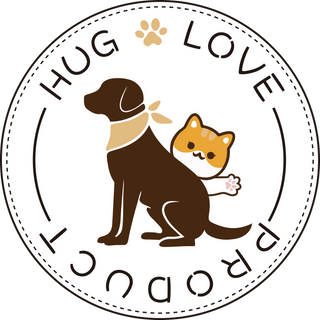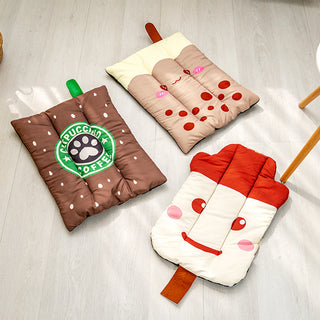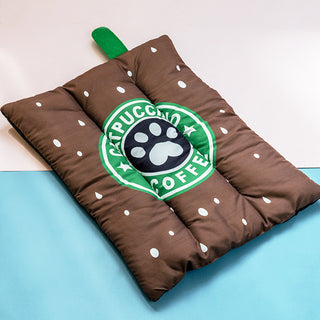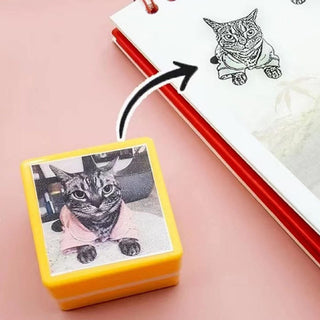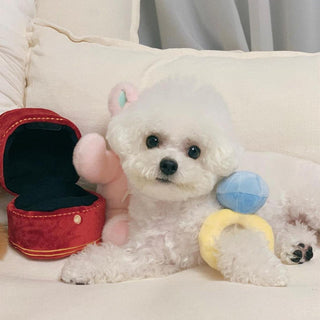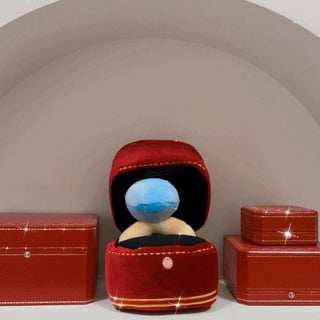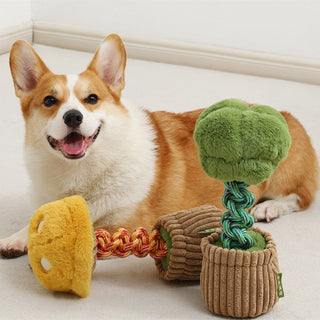Have you ever found yourself wondering what your furry friend is trying to say with those wiggling tails and perky ears? Worry not! Fellow dog parents. In this guide, we will dive into the playful universe of "Doggy Dialects 101." From wagging tails to expressive eyes, we'll decode all.
So, grab your four-legged friend, and let's start our journey to become the ultimate dog whisperer!
Doggy Dialects 101: Understanding the Basics of Dog Body Language
Let’s dig into Doggy Dialects 101, where we break down the basics of your furry friend's body language.
 1. The Tale Wagging
1. The Tale Wagging
The tail is the canine communicator's wand, casting joy, excitement, or caution spells. A wagging tail isn't always a happy dance; it's their way of spilling the beans on their emotions. Slow wags, fast wags – it's a doggy Morse code!
2. Ear-Resistible Expressions
Your pup's ears are the sneak peek into their emotional world. Perked up and forward means they're into the action, like a furry detective on high alert. But if those ears are flat against their head, it's like a red flag waving – anxiety or a touch of fear might be in the air.
However, when ears are tightly pinned back, it's the canine version of "back off, I need space." They may be uncomfortable or feeling aggressive.
And yes, floppy-eared friends might add a twist to the plot. Still, with a little bit of practice, you'll be fluent in the language of ears.
3. Facial Expressions
Just like humans, your dog spills the beans with facial expressions! A happy pup rocks a chill face with gentle eyes, radiating happiness. On the other hand, if your furry friend is stressed or anxious, you might catch a furrowed brow and intense, unblinking eyes.
Decoding these expressions might seem like a tricky plot twist, especially with breeds sporting black fur or flat faces. But once you've got the cheat sheet for their facial language, you'll be the master of understanding your dog's emotional script.
4. Raised Hackles
When your dog's hackles stand at attention, it's like a furry Mohawk running down its back. Scientifically known as piloerection, their fur can puff up from shoulders to tail, signaling a surge in excitement.
But don't jump to conclusions – it doesn't always mean trouble. Your dog might be upset, stressed, or simply caught up in the thrill of the moment, similar to our involuntary goosebumps.
So, if those hackles are on high alert, your pup is telling you something intriguing is happening, and decoding this fur-raising phenomenon might just reveal the adventure they're experiencing!
5. Body Language
A dog's body language spills the beans on mood and intentions, and it's all in the weight distribution. A dog cowering, hunched low, is a clear sign of fear or stress. They're essentially saying, "I mean no harm" by trying to make themselves appear smaller, aiming to slip away from a source of discomfort.
Now, the extreme is when a dog flips onto their back, presenting their belly. While it might seem like an invitation for a belly rub, and often it is in a relaxed dog, it can also signal significant stress and anxiety. Some dogs might even let out a little urine as a gesture of appeasement.
On the flip side, if you spot a dog with their weight shifted forward, they're leaning in, trying to get closer to something. It might just be innocent curiosity, but it could spell trouble when paired with other signs like a high-held, twitching tail.
Here, the dog attempts to appear larger, hinting at potential offensive intentions. It's like their expressive dance, telling a tale of their intentions.
Decoding Different Moods of Dogs
Here are some examples of different moods of dogs explained through their body language. Let’s get in!
 1. Happy Dog Body Language
1. Happy Dog Body Language
Ever caught your dog rolling in the grass like they just aced a dance routine? That's the Happy Dog Body Language Disco, and we've got the lowdown on the groovy signs.
Á happy dog is a sign of chill vibes. They will be loose as a noodle, with no muscle tension to be found and eyes so relaxed they're practically winking at you.
So, how do you spot the paw-sitively joyous pup?
- Mouth slightly up.
- Eyes soft, none of that intense staring; it's more of a laid-back gaze.
- Ears rocking a neutral position, not too perked up or down in the dumps.
- The tail doing a loosey-goosey wag with a carefree sway. It's like the doggy version of a celebratory wiggle!
This doggy looseness perfectly reflects your dog's carefree mood during the interaction. Watch out for the bonus moves like a slight nod of the head, ears casually dropping, and the doggy drop-and-roll.
2. Frightened Dog Body Language
Now, what about a frightened dog?
A scared dog might pull off some Oscar-worthy moves. Cowering, leaning away, or attempting the classic hide-and-seek routine are their ways of saying, "Hold up, I need my personal space!"
But wait, there's more to this doggy drama. Here's a checklist of fear indicators:
- Lip licking
- The art of avoiding eye contact, a classic "don't make eye contact" move.
- A front paw lift, like they're striking a pose in a canine ballet.
- Yawning when not tired – a canine yawn, not a sleepy one.
- Holding perfectly still, as if they've been caught in the act.
3. Aggressive Dog Body Language
When it comes to understanding aggressive dog body language, it's crucial to speak the canine dialect fluently.
Signs of aggression can include:
- A stiff body posture,
- Raised hackles resembling a furry mohawk,
- Intense staring and
- Bared teeth.
A dog might lower its head, giving a threatening gaze, while its tail stands erect, signaling readiness for confrontation. Moreover, raised lips, growling, and a deep, throaty bark can further highlight the message of hostility.
However, learning to recognize these signs is like unlocking a secret language, ensuring you can master the doggy world safely and prevent potential conflicts.
Conclusion
So, every tail wag, ear twitch, and bark plays a crucial role. Remember, it's a comprehensive package of signals that paints the full picture. Understanding these cues is similar to holding the key to a harmonious companionship.
FAQs
1. How do you read a dog's body language?
To interpret a dog's language, observe tail wagging, ear positioning, and eye expressions. Each cue, from body posture to facial features, contributes to the conversation. It's about decoding the comprehensive package of signals.
2. How do you read what your dog is saying?
Decode your dog's messages by paying attention to subtle cues – tail height, ear shape, and overall body language. It's like learning a unique dialect that strengthens your bond.
3. What is an unhappy dog's body language?
Signs of an unhappy dog include lowered ears, a tucked tail, and avoidance behavior. Watch for cues like lip licking and yawning, indicating stress or anxiety. Understanding these signals helps address their needs.
4. How can I tell my dog I love him in his language?
Show love in your dog's language through gentle touch, positive reinforcement, and quality time. Tail wags, relaxed body language, and eye contact convey affection. Learn to speak their emotional dialect for a stronger connection.
